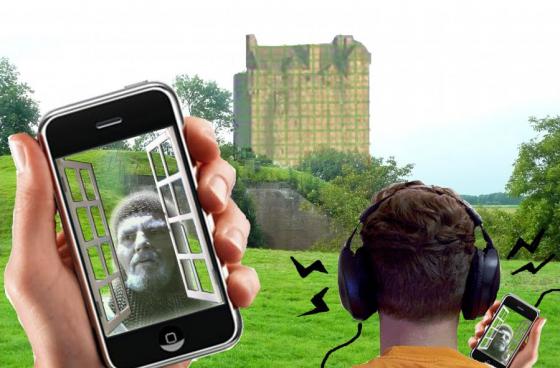
The conference “How to bring archaeology” to life was held from October 3rd - 7th 2011 at the Hunebedcentre in Borger, the Netherlands. Organisers were the project Zeitgeist, the project OpenArch, EXARC and the Hunebedcentre. The conference was a huge success with almost 100 participants from about ten countries. During the conference, attention was paid to different ways to communicate with (potential) customers in relation to archaeological open-air museums. These included both modern and traditional communication methods.
The conference kick-off took place at Monday evening with a welcome dinner, and a word of welcome by Hein Klompmaker - the director of the Hunebedcentre – and Marco Out, the mayor of Borger-Odoorn.
On Tuesday morning, an evaluation of the project Zeitgeist took place. During the evaluation, the (museum) partners in the project presented and discussed the project progress including the development of project products. After the discussion, the project group attended a guided tour of the Hunebedcentre. In the afternoon, the partners attended a workshop led by Annemarie Pothaar of Bureau Erfgoed en Publieksbereik. During the first part of the workshop, participants performed practical exercises in which the group had to think creatively about the image of their museum, which they want to convey to customers. Is this image also clear to the museum staff? Each museum presented their ideas after which they produced a winning concept in cooperation. Pothaar clarified the importance for a museum to reflect on both your current image and your desired image. In the second part of the workshop, the group discussed the nature of a heritage market and the golden rules for organising such a market.
On Wednesday morning, four lectures were organised with different topics. Evert van Ginkel, the chair of the day, started with a critical remark about the possibilities and constraints of new media. Museums can not only target new visitors with new media but also reconnect with existing visitors. Despite these new channels, the content of the message to the customer has not changed.
Charlotte Jensen of the National Museum of Denmark, Copenhagen gave the first lecture, named Get visible. She discussed the importance of social media for museums and provided practical guidelines on how to start with social media. During this lecture, discussion focused especially on how much of their time and resources museums should invest in social media and their websites.
The second lecture by Hein Klompmaker, named Using new media: content as a basis, discussed the importance of message content. He stressed that in order to successfully use new media, message content is (still) of utmost importance. Storytelling, the exploration of scientific literature on archaeology and other sciences, and experimental archaeology are ways of obtaining interesting stories as message content. Klompmaker stated that new media are only good to support/enhance traditional methods.
Sebastian Buks gave the third lecture titled Virtual Heritage: how we can combine the past and modern technology. The research of Sebastian is concerned with how we can use digital technologies in the cultural heritage domain. Sebastian explained the possibilities and usability issues of Augmented Reality as an example of a novel digital technology. Through three case studies, Sebastian gave an insight into a future in which smartphone availability and computation power increase. At the end of his lecture, Sebastian gave a demonstration of some augmented reality applications.
Jan Hendrik de Bruin presented the final lecture titled Communication Techniques of the Future and it focused on the development of a new piece of hardware, the Surface Table. The table is very innovative due to its multi-user experience and object recognition. The discussion focused on the high investment that is required in comparison to mobile phones (e.g. iPhone) and how long the WOW-factor is different because of its multi-user experience and the object recognition.
During lunch on Wednesday, there was time to explore the experimental archaeology in the outside area of the Hunebedcentre and the company info boots. On Wednesday afternoon, four workshops took place:
- How to Write a Good Story by Jouke Nijman, Flashstudio,
- How to Get a Story – all about branding by Erik Schoppen & Herman ten Kate, Hanzehogeschool;
- How to spread a story – conducting cross-media campaigns by Jef Folkerts, Hanzehogeschool;
- Mobile Location Based Experience by Johanneke Minnema, Tempeest.
In these four workshops, participants learned how to get a good story and how to spread the story through different media: social media, traditional media, new media and games.
Tanja Klip-Martin, deputy of the province of Drenthe gave the closing speech on Wednesday addressing the importance of this conference.
Thursday was the day for site visits. In the morning, we explored the rural surroundings and hunebedden. Following on that we moved to the Groninger museum in the city of Groningen. In this museum, new media are part of the museum exhibitions. The department of education of the museum provided a guided tour. The museum visit was followed by a boat trip through the canals of Groningen (how typically Dutch!). Next, the participants could choose to join a tour of the hofjes (historic almshouse courtyards and gardens) or have some free time in the city. The day ended with a Farewell Dinner at restaurant De Wiemel in Gasselte.
Illustration: Prototype phone application of the "Living Lab project Augmented Reality" (source)
